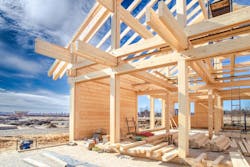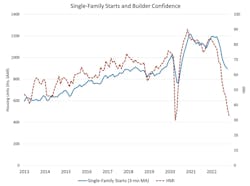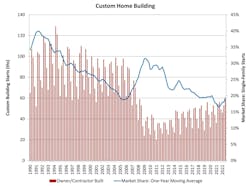Custom Home Building Gets Good News
While much recent housing data shows declines in home building and buying across the country, at least one section of the market appears to be climbing counter the current: custom home building.
The Good and Bad in Housing Data
In October, total exhisting home sales, including single-family homes, townhomes, condominiums and co-ops, were 28.4% lower than they were the year prior, according to the National Association of Realtors. In the same month, the National Association of Home Builders reported that overall housing starts had fallen 4.2%, and that year to date, single-family starts are down 7.1%. "This will be the first year since 2011 to post a calendar year decline for single-family starts," wrote Robert Dietz, NAHB's chief economist.
Source: National Association of Home Builders
Builder confidence has declined for 11 straight months, as of this November.
But there are bright spots in the market. The nation's labor pool in October officially reached pre-pandemic levels, following a year-over-year increase of 5.3 million jobs, which included a 3.6% increase in construction jobs, according to the Bureau of Labor Statistics. Also in October, the Producer Price Index showed that building material prices declined for the second consecutive month. And as mentioned above, custom building is increasing.
Custom Home Building Sees Growth
For more than a decade, custom building, accounting for a market cyclicality, has maintained an upward trajectory. This year's third quarter saw 59,000 custom building starts, a 14-year high, according to NAHB. The gain represents a 5% increase compared to Q3 2021. For the quarter, custom home building accounted for 20% of total home starts.
Source: National Association of Home Builders
"Over the last four quarters, custom housing starts totaled 207,000 units, a 9% gain from the prior four-quarter total," NAHB chief economist Dietz wrote in his report. "Custom construction likely benefitted from improved supply-chains, a reduction in the growth rate of the cost of building materials and a stock market rally that helped the higher end of the market."
Looking forward, Dietz explains that in times of housing market weakness, submarkets, such as custom home building, tend to fair better than the market as a whole "as it is relatively more stable with respect to demand and less interest-rate sensitive."


